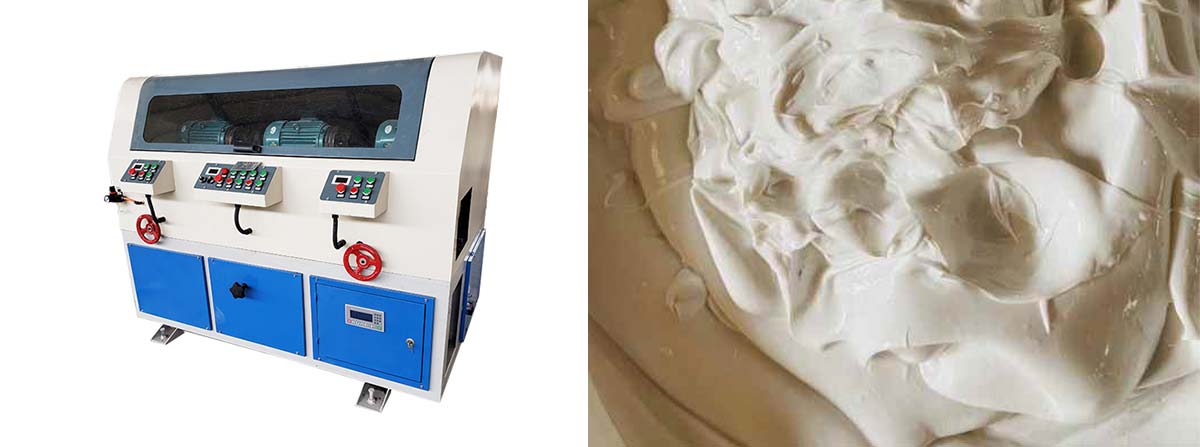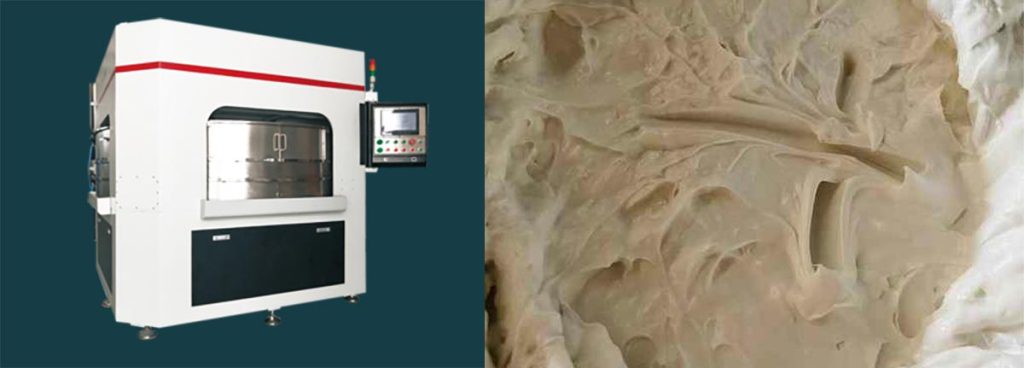

Maintaining the quality of food-grade metal surfaces requires using a buffing and polishing compound. These compounds ensure compliance with the Federal Food, Drug, and Cosmetic Act (FFDCA), which mandates that materials in direct contact with food meet strict safety standards. Polishing these surfaces enhances hygiene by removing contaminants and creating a clean, smooth finish that resists bacterial growth. It also improves durability by preventing corrosion and adds a professional, mirror polishing to the metal. Using the right tools and techniques during buffing ensures both safety and effectiveness, delivering superior results without compromising food safety.
Key Takeaways
- Use safe buffing compounds to meet food safety rules for metals.
- Polishing often makes surfaces smooth, stops bacteria, and cleans easily.
- Pick the right compound that works well with the metal type.
- Clean and prepare the surface first for a perfect shiny finish.
- Check the polished surface carefully and add a safe sealant if needed.
Importance of Polishing and Restoring Metals
Hygiene and Food Safety Benefits
Polishing and restoring metals play a critical role in maintaining hygiene, especially for food-grade surfaces. Smooth, polished surfaces reduce the risk of contamination by eliminating cracks and crevices where bacteria can thrive. For instance, food contact surfaces must meet hygiene standards requiring a roughness average (Ra) of 0.8 µm or less. This level of smoothness, achieved through polishing, ensures that the surface remains easy to clean and sanitize. Additionally, polished stainless steel surfaces prevent the buildup of contaminants, making them ideal for food processing and medical applications.
Enhancing Durability and Corrosion Resistance
Regular polishing enhances the durability of food-grade metals by improving their resistance to corrosion. Processes like electropolishing create a microscopically smooth surface, strengthening the oxide layer that protects stainless steel from rust and wear. This not only extends the lifespan of the metal but also makes it easier to sanitize. By removing microscopic flaws, polishing ensures that the surface remains free from imperfections that could compromise its structural integrity. In industries like aerospace and food processing, this durability is essential for maintaining performance and safety.
Aesthetic and Professional Appeal
Polishing and restoring metals significantly improve their appearance, giving them a smooth, glossy finish. This enhanced aesthetic appeal is crucial in industries where a professional look is important, such as automotive, medical devices, and food processing. Polished surfaces reflect light better, creating a mirror-like shine that conveys quality and attention to detail. By removing surface imperfections, polishing not only improves the visual appeal but also contributes to the longevity of the metal. A polished surface communicates professionalism and reliability, making it a preferred choice in many industrial applications.
Selecting the Right Buffing and Polishing Compound
Choosing the correct buffing and polishing compound is essential for achieving a flawless surface on food-grade metals. The right compound ensures safety, compatibility, and effectiveness, especially when polishing stainless steel. This section outlines the key criteria for selecting food-safe compounds, examples of high-quality buffing compounds, and their compatibility with various metals.
Criteria for Food-Safe Compounds
Food-safe buffing and polishing compounds must meet strict industry standards to ensure safety and compliance. These standards define the composition, quality, and performance parameters required for compounds used in food manufacturing. For instance, buffing and polishing compounds must not contain harmful chemicals that could leach into food or beverages. They should also be easy to clean off the surface after use, leaving no residue that could compromise hygiene.
When selecting a polishing compound, look for certifications or labels indicating compliance with food safety regulations, such as the Federal Food, Drug, and Cosmetic Act (FFDCA). Additionally, consider the compound’s ability to achieve a smooth, mirror finish without damaging the metal. A high-quality buffing compound should also enhance the durability of the surface by reducing imperfections and preventing corrosion.
Examples of Food-Safe Polishing Products
Several food-safe polishing products are available for use on stainless steel and other food-grade metals. These products are designed to deliver excellent results while maintaining safety and hygiene. Below is a table highlighting one such product and its features:
| Product Name | Compatibility | Application | Benefits |
|---|---|---|---|
| Prolystica® 2X Concentrate | Stainless steel, plastics, soft metals | Manual cleaning, automated washers, ultrasonics | Superior cleaning results against tough soils in a 2X concentrated formula |
Other products, such as Solstice® PF-HP, demonstrate good compatibility with various stainless steel grades, including A286 SST, 304L, and 440C SST. These compounds are effective in achieving a gloss finish while ensuring the surface remains food-safe.
Compatibility with Stainless Steel and Other Metals
Not all polishing compounds are suitable for every type of metal. Stainless steel, commonly used in food processing, requires polishing compounds specifically formulated to work with its unique properties. For example, compounds designed for stainless steel should enhance its natural corrosion resistance and create a smooth, reflective surface.
Solstice® PF-HP, for instance, is compatible with multiple stainless steel grades, including 17-4PH and AISI 4140. This versatility makes it an excellent choice for polishing stainless steel and other alloys. When selecting a compound, always verify its compatibility with the specific metal to avoid damage or suboptimal results.
By choosing the right buffing compound, users can polish stainless steel surfaces to a mirror finish, ensuring both aesthetic appeal and long-term durability. Proper selection also simplifies the cleaning process, as food-grade alcohol or 200 proof food grade ethanol can easily remove any residue left behind.
Preparing Food-Grade Metal for Polishing
Cleaning and Washing the Surface
Proper cleaning is the first step in preparing food-grade metal for polishing. Residues such as proteins, oils, and other contaminants can compromise the effectiveness of the buffing and polishing compound. Specialized alkaline detergents and wetting agents are essential for removing these residues. This ensures that the surface is free from contaminants that could affect food safety or the final finish.
Tip: Use food-grade alcohol or 200 proof food grade ethanol to clean the surface thoroughly. These solutions effectively dissolve grease and leave no harmful residue.
Studies show that cleaning with HClO4 significantly reduces surface contaminants, enhancing the interaction between the surface and the polishing compound. Before cleaning, contaminants like zinc and sulfur are often present. After cleaning, these impurities are removed, resulting in a cleaner surface that improves the performance of buffing compounds.
Drying and Inspecting for Flaws
After cleaning, drying the surface is crucial to prevent water spots or streaks that could interfere with polishing. Use lint-free cloths or air-drying methods to achieve a spotless surface. Once dry, inspect the metal for flaws such as scratches, dents, or uneven areas. These imperfections can affect the final gloss finish and must be addressed before proceeding.
Note: A thorough inspection ensures that the surface is ready for polishing, reducing the risk of suboptimal results.
Leveling the Surface for a Smooth Finish

Leveling the surface is essential for achieving a mirror polishing. Techniques like laser-polishing or targeted deburring effectively remove imperfections and reshape the surface geometry. Research highlights that laser-polishing enhances the quality of the final polish by eliminating surface irregularities.
Different finishes, such as No. 4A or bead blast, offer varying levels of smoothness and reflectivity. The table below outlines common finishes and their applications:
| Finish Type | Description | Applications | Sanitation Environment | RA |
|---|---|---|---|---|
| Mill Finish | Unfinished steel in basic supply condition. | Structural | Not used in food contact areas | >100 |
| 2B Finish | Achieved by cold-rolling, heat-treating, and pickling. | Material handling, processing, direct food contact | Suitable for sanitary wash down procedures | 36 (7 gauge) 15 (16 gauge) |
| No. 4 Finish | Consistent straight grain finish produced by polishing. | Clean rooms, food processing equipment | Suitable for sanitary wash down procedures | 29-40 |
| No. 4A Finish | Fine polishing grit lines that are uniform and directional. | Clean rooms, food processing equipment, Pharmaceutical, 3A Dairy Standards | Suitable for sanitary wash down procedures | 18-31 |
| Bead Blast | Uniform, non-directional, low-reflective surfaces. | Structural, material handling, food handling | Suitable for sanitary wash down procedures | 45 |
Leveling the surface ensures that the buffing process produces a smooth, reflective finish. This step is critical for polishing stainless steel to a mirror-like shine, enhancing both its aesthetic and functional qualities.
Step-by-Step Guide to Polish Stainless Steel
Tools and Materials Needed (Including Industrial Buffing Machine)
Polishing stainless steel requires the right tools and materials to achieve a flawless finish. Using improper equipment can lead to uneven results or damage to the surface. Below is a list of essential tools and materials for polishing stainless steel:
- Industrial Buffing Machine: A high-quality buffing machine ensures consistent pressure and speed, which are crucial for achieving a smooth and even finish. The machine should meet OSHA standards, and its buffing wheel must match the diameter of the arbor hole.
- Buffing Wheels and Pads: Select wheels and pads compatible with the type of stainless steel being polished. Ensure they are free from defects before installation.
- Buffing and Polishing Compound: Use a food-safe polishing compound specifically designed for stainless steel. This ensures safety and enhances the surface’s durability and appearance.
- Diamond Polishing Tools: For fine grinding, use diamond on rigid discs or specialized cloths like MD-Plan or MD-Sat. These tools help remove imperfections without causing deep deformation.
- Colloidal Silica or Alumina: These materials are ideal for final polishing, providing a mirror finish and improving surface contrast.
- Protective Gear: Always wear protective glasses or face shields to ensure safety during the buffing process.
Tip: Avoid using coarse grinding foils or applying high pressure on soft stainless steel. This can cause deep scratches or deformation, making it harder to achieve a smooth finish.
Cleaning and Preparing the Surface
Proper cleaning and preparation are essential before polishing stainless steel. Contaminants or surface imperfections can interfere with the polishing process, leading to suboptimal results. Below are the recommended steps for cleaning and preparing the surface:
- Degreasing: Remove contaminants like grease and oil using solvents such as acetone or food-grade alcohol. This step ensures the surface is free from residues that could affect the polishing compound’s performance.
- Abrasion: Use mechanical methods like sandblasting or wire brushing to eliminate surface deposits. This step smooths the surface and prepares it for polishing.
- Chemical Treatment: Apply acids or alkalis to alter the surface properties for better adhesion. Rinse thoroughly to remove any chemical residues.
| Method | Description |
|---|---|
| Degreasing | Involves removing contaminants using solvents like acetone and isopropyl alcohol. |
| Abrasion | Mechanical removal of surface deposits using techniques like sand blasting and wire brushing. |
| Chemical Treatment | Uses acids and alkalis to alter surface properties for better adhesion, followed by rinsing. |
After cleaning, rinse the surface with water and dry it using a lint-free cloth. Inspect the surface for scratches, dents, or other imperfections. Address these flaws before proceeding to ensure a smooth and even finish.
Note: Always clean in the direction of the grain to avoid leaving scratch marks. Using soft, lint-free cloths reduces the risk of scratches.
Applying the Buffing and Polishing Compound
Applying the buffing and polishing compound is a critical step in achieving a mirror finish on stainless steel. Follow these steps for optimal results:
- Select the Right Compound: Choose a food-safe buffing and polishing compound compatible with stainless steel. This ensures safety and enhances the surface’s durability and appearance.
- Apply the Compound: Spread the compound evenly on the buffing wheel or pad. Avoid overloading the wheel, as this can lead to uneven results.
- Buff the Surface: Use the industrial buffing machine to polish the surface. Apply consistent pressure and maintain a steady speed. Move the buffing wheel in a controlled pattern to ensure even coverage.
- Inspect the Surface: After buffing, inspect the surface for any remaining imperfections. Repeat the process if necessary to achieve the desired gloss finish.
- Polishing stainless steel with a buffing compound improves its surface quality and maintains its glossy appearance.
- The process reduces the size and quantity of rust-promoting fissures, enhancing the metal’s durability.
- Polishing also removes imperceptible impurities, ensuring a clean and hygienic surface.
Tip: Use 200 proof food grade ethanol to remove any residue left by the polishing compound. This ensures the surface remains food-safe and free from contaminants.
By following these steps, users can polish stainless steel to a mirror finish, enhancing its aesthetic appeal and functional qualities. Proper application of the buffing and polishing compound ensures a smooth, reflective surface that resists corrosion and maintains hygiene.
Buffing the Surface to Achieve Shine
Buffing stainless steel is a crucial step in achieving a flawless, reflective surface. This process enhances the metal’s appearance and ensures its durability and hygiene. To begin, operators should secure the stainless steel piece firmly to prevent movement during buffing. A stable setup minimizes errors and ensures consistent results.
The buffing process involves using a buffing wheel coated with a buffing and polishing compound. The wheel rotates at high speed, creating friction that smooths the surface. Operators should move the wheel in a controlled, overlapping pattern. This technique ensures even coverage and prevents streaks or uneven areas. Applying consistent pressure is essential. Excessive force can damage the surface, while insufficient pressure may leave imperfections.
For optimal results, operators should periodically reapply the buffing and polishing compound to the wheel. This maintains its effectiveness and ensures a smooth finish. The process should continue until the surface achieves a mirror finish, reflecting light evenly without visible scratches or blemishes.
Tip: Always buff in the direction of the grain to avoid creating cross-grain scratches. This technique preserves the metal’s natural texture and enhances its appearance.
Buffing stainless steel not only improves its aesthetic appeal but also enhances its functional qualities. A polished surface resists corrosion and remains easier to clean, making it ideal for food-grade applications.
Final Touches and Inspection

After buffing, the final touches ensure the surface meets the desired standards. Begin by cleaning the metal thoroughly to remove any residue left by the buffing compound. Using 200 proof food grade ethanol is an effective way to clean the surface. This solution dissolves any remaining grease or compound, leaving the metal spotless and food-safe.
Once clean, inspect the surface under bright light to identify any remaining imperfections. Look for scratches, streaks, or uneven areas. If necessary, repeat the buffing process on specific sections to achieve a uniform finish. A detailed inspection ensures the surface meets both aesthetic and functional requirements.
For added protection, consider applying a food-safe sealant to the polished surface. This step enhances the metal’s resistance to corrosion and maintains its mirror finish over time. Sealants also make the surface easier to clean, further improving its hygiene.
Note: Regular maintenance, including cleaning and re-polishing, helps preserve the surface’s quality and appearance. This practice ensures the metal remains durable and visually appealing.
By following these steps, operators can polish stainless steel to perfection. The result is a smooth, reflective surface that combines beauty, durability, and hygiene. Proper buffing and inspection techniques ensure the metal meets the highest standards for food-grade applications.
Conclusion
Polishing food-grade metals with food-safe compounds and proper buffing techniques ensures safety and effectiveness. This process not only enhances hygiene by removing microscopic imperfections but also simplifies cleaning and sterilization. A smooth finish reduces bacterial adhesion, making it ideal for food processing environments.
Polished metal surfaces offer durability and corrosion resistance, with electropolishing providing up to 30 times more protection than traditional methods. Additionally, the glossy finish achieved through polishing enhances the aesthetic appeal, giving the metal a uniform and mirror-like appearance. These benefits make polished metals a preferred choice in industries requiring high standards of cleanliness and durability.
By following the outlined steps, readers can achieve a flawless finish on food-grade metals, ensuring both functionality and visual appeal.
